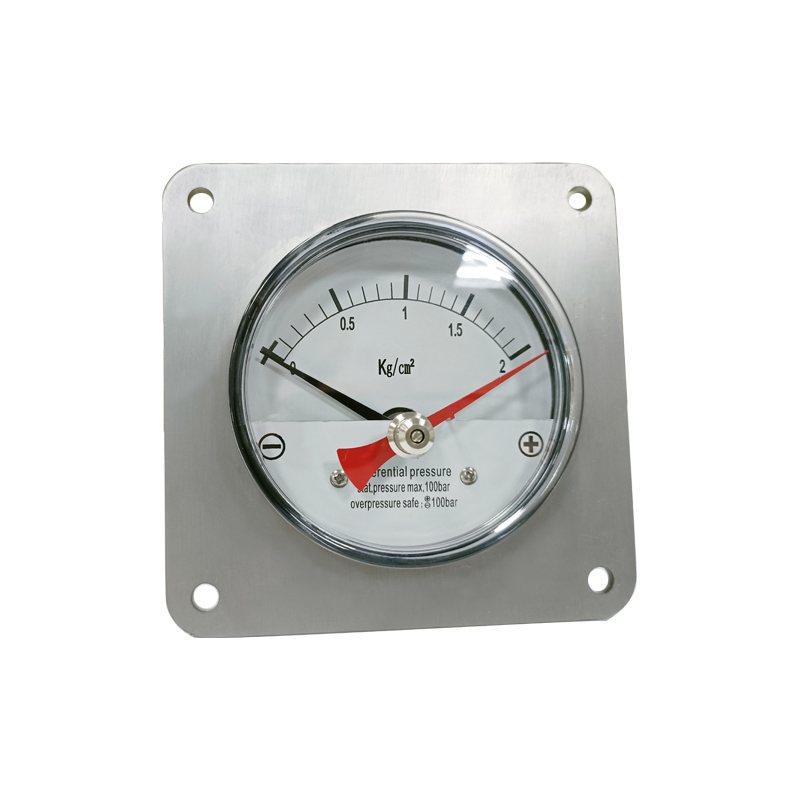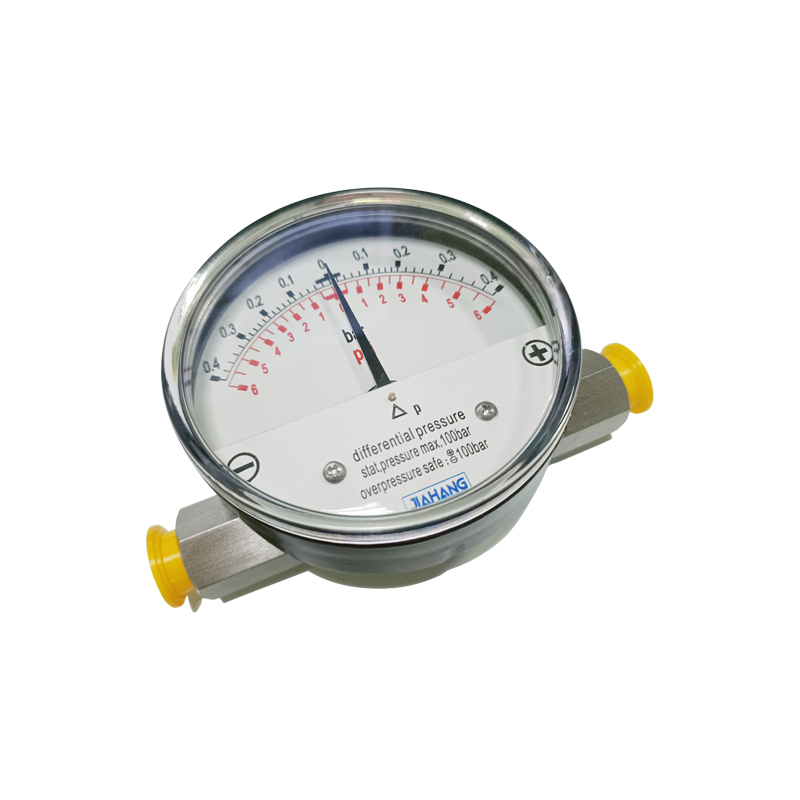Introducing the Differential Pressure Gauge: Precision Measurement for Optimal Performance
In today’s fast-paced industrial landscape, accurate measurement and monitoring of pressure differentials are crucial for ensuring the efficiency and safety of various processes. Introducing our state-of-the-art Differential Pressure Gauge, a reliable instrument designed to provide precise readings for a wide range of applications, from HVAC systems to filtration processes and beyond.
What is a Differential Pressure Gauge?
A Differential Pressure Gauge is an essential tool that measures the difference in pressure between two points in a system. This measurement is vital for monitoring the performance of equipment, ensuring optimal operation, and preventing potential failures. Whether you are managing air flow in a ventilation system or monitoring fluid levels in a tank, our Differential Pressure Gauge delivers the accuracy and reliability you need.
Key Features and Benefits
1. High Accuracy and Reliability: Our Differential Pressure Gauge is engineered with advanced technology to ensure high accuracy in readings. With a precision of ±1% of full scale, you can trust that the data you receive is both reliable and actionable.
2. Robust Construction: Built to withstand the rigors of industrial environments, our gauge features a durable casing that protects it from dust, moisture, and other contaminants. This ensures longevity and consistent performance, even in challenging conditions.
3. Wide Measurement Range: The gauge is designed to accommodate a broad range of pressure differentials, making it suitable for various applications. Whether you need to measure low pressure in HVAC systems or high pressure in industrial processes, our Differential Pressure Gauge has you covered.
4. User-Friendly Interface: Equipped with a clear, easy-to-read display, our gauge allows for quick and straightforward monitoring. The intuitive design ensures that operators can easily interpret readings, reducing the risk of errors and enhancing operational efficiency.
5. Versatile Applications: This gauge is ideal for a multitude of applications, including air and gas flow measurement, filter monitoring, and liquid level detection. Its versatility makes it an indispensable tool for engineers, technicians, and facility managers across various industries.
6. Easy Installation and Maintenance: Designed with user convenience in mind, our Differential Pressure Gauge can be easily installed in any system. Additionally, it requires minimal maintenance, allowing you to focus on your core operations without the hassle of frequent upkeep.
7. Customizable Options: We understand that every application is unique. That’s why we offer customizable options, including different pressure ranges, connection types, and materials, ensuring that you get the perfect gauge for your specific needs.
Why Choose Our Differential Pressure Gauge?
Investing in our Differential Pressure Gauge means investing in quality, accuracy, and peace of mind. With our commitment to excellence and customer satisfaction, you can trust that you are receiving a product that meets the highest industry standards. Our team of experts is always available to provide support and guidance, ensuring that you get the most out of your purchase.
In conclusion, the Differential Pressure Gauge is an essential instrument for anyone looking to enhance their operational efficiency and ensure the safety of their processes. With its high accuracy, robust construction, and versatile applications, it stands out as a top choice for professionals across various industries. Don’t compromise on quality—choose our Differential Pressure Gauge and experience the difference in performance and reliability.
-
Manometro differenziale: tipo a pistone magnetico
-
Differential Pressure Gauge-Magnetic piston francois typeYCC-80.03(851.3)
-
Differential Pressure Gauge-Magnetic piston typeYCC-80.01(851.1)
-
Manometro differenziale con pistone magnetico-YCC80
How To Measure The Differential Pressure?
Differential pressure gauges are essential instruments used in various industries to measure the difference in pressure between two points in a system. Understanding how to measure differential pressure accurately is crucial for maintaining system efficiency, ensuring safety, and optimizing performance. This article will guide you through the process of measuring differential pressure using a differential pressure gauge.
What is a Differential Pressure Gauge?
A differential pressure gauge is a device that measures the pressure difference between two points. It typically consists of two pressure ports, a sensing element, and a display mechanism. The gauge can be mechanical or electronic, and it provides a visual representation of the pressure difference, often in units such as psi, bar, or pascals.
Why Measure Differential Pressure?
Measuring differential pressure is vital in various applications, including HVAC systems, filtration processes, and fluid flow monitoring. It helps in:
1. Monitoring System Performance: By measuring the pressure drop across filters or other components, operators can determine when maintenance is required.
2. Ensuring Safety: In processes involving gases or liquids, monitoring differential pressure can prevent dangerous situations, such as leaks or system failures.
3. Optimizing Efficiency: Understanding pressure differences can help in adjusting system parameters for better performance and energy savings.
Steps to Measure Differential Pressure
1. Select the Right Differential Pressure Gauge: Choose a gauge that suits your application. Consider factors such as the pressure range, accuracy, and the type of media (liquid or gas) being measured.
2. Install the Gauge: Proper installation is crucial for accurate measurements. Connect the two pressure ports of the gauge to the points in the system where you want to measure the pressure difference. Ensure that the connections are secure and leak-free. The high-pressure port should be connected to the point with the higher pressure, while the low-pressure port should be connected to the point with the lower pressure.
3. Calibrate the Gauge: Before taking measurements, it’s essential to calibrate the gauge to ensure accuracy. Follow the manufacturer’s instructions for calibration, which may involve adjusting the zero point or comparing the gauge reading with a known standard.
4. Take the Measurement: Once the gauge is installed and calibrated, you can take the measurement. Read the display on the gauge to determine the differential pressure. If using a mechanical gauge, ensure you are reading it at eye level to avoid parallax errors.
5. Record and Analyze the Data: Document the differential pressure readings for future reference. Analyzing these readings over time can help identify trends, potential issues, and the overall health of the system.
6. Regular Maintenance: To ensure continued accuracy, perform regular maintenance on the differential pressure gauge. This includes checking for leaks, recalibrating as necessary, and replacing any worn components.
Measuring differential pressure with a differential pressure gauge is a straightforward process that plays a critical role in various industrial applications. By selecting the right gauge, ensuring proper installation, and regularly maintaining the equipment, operators can achieve accurate and reliable measurements. This not only enhances system performance but also contributes to safety and efficiency in operations. Whether in HVAC systems, filtration processes, or fluid dynamics, understanding how to measure differential pressure is an invaluable skill for professionals in the field.
What Is The Difference Between Gauge Pressure And Differential Pressure?
In the world of fluid mechanics and pressure measurement, understanding the nuances of different types of pressure is crucial for accurate readings and effective system management. Two common terms that often arise in this context are gauge pressure and differential pressure. This article will explore these concepts, focusing on the role of differential pressure gauges and clarifying the differences between gauge pressure and differential pressure.
What is Gauge Pressure?
Gauge pressure refers to the pressure measurement relative to the ambient atmospheric pressure. It is the pressure that is measured by a gauge that does not account for atmospheric pressure. For instance, if a tire pressure gauge reads 30 psi, it means that the pressure inside the tire is 30 psi above the atmospheric pressure. Gauge pressure is commonly used in various applications, including automotive, HVAC systems, and industrial processes, where it is essential to know the pressure relative to the surrounding environment.
What is Differential Pressure?
Differential pressure, on the other hand, is the difference in pressure between two points in a system. This measurement is crucial in many applications, such as flow measurement, filtration, and level measurement. Differential pressure gauges are specifically designed to measure this difference, providing valuable insights into system performance. For example, in a filtration system, the differential pressure across the filter can indicate when the filter is becoming clogged and needs to be replaced.
The Role of Differential Pressure Gauges
Differential pressure gauges are specialized instruments that measure the pressure difference between two points. They are equipped with two pressure ports: one connected to the high-pressure side and the other to the low-pressure side. The gauge then calculates the difference and displays it, allowing operators to monitor system performance effectively. These gauges are widely used in various industries, including oil and gas, water treatment, and HVAC, where maintaining optimal pressure levels is critical for safety and efficiency.
Key Differences Between Gauge Pressure and Differential Pressure
1. Reference Point: The primary difference between gauge pressure and differential pressure lies in their reference points. Gauge pressure is measured relative to atmospheric pressure, while differential pressure is measured between two distinct points within a system.
2. Applications: Gauge pressure is commonly used in applications where the pressure needs to be monitored against the atmosphere, such as tire pressure and boiler systems. In contrast, differential pressure is essential in applications where the pressure difference between two points is critical, such as in flow measurement and filtration systems.
3. Measurement Instruments: Gauge pressure is typically measured using standard pressure gauges, while differential pressure requires specialized differential pressure gauges that can accurately measure the difference between two pressure points.
4. Interpretation of Readings: Gauge pressure readings can be directly interpreted as the pressure above atmospheric levels, while differential pressure readings require an understanding of the two points being measured to interpret the significance of the pressure difference.
In summary, while both gauge pressure and differential pressure are essential concepts in pressure measurement, they serve different purposes and are used in various applications. Differential pressure gauges play a vital role in monitoring the performance of systems by measuring the pressure difference between two points. Understanding the differences between these two types of pressure measurements is crucial for professionals in fields such as engineering, manufacturing, and process management, ensuring that systems operate efficiently and safely.





